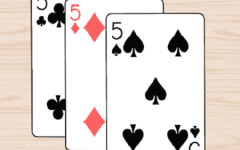Advertisement
The Greatest Estate Developer
Advertisement

The Greatest Estate Developer begins with a modern student of civil engineering who wakes up in a medieval world as Lloyd Frontera, a nobleman burdened with inherited debt. Instead of swords or spells, he uses technical logic and construction knowledge to survive. The narrative centers on his adaptation to a system where development, planning, and land improvement replace direct combat. Lloyd turns the ruins of his family estate into an organized project site, proving that skill and reason can shift fate even in a fantasy environment.
Gameplay And Core Idea
Although the concept started as a webtoon, the theme fits simulation and management mechanics. In such adaptations, the player’s task revolves around growth, investment, and strategic rebuilding. Each structure, farm, or resource node becomes a puzzle about efficiency and sustainability. The story connects to the logic of real-world planning, where success depends on coordination and resource control rather than speed or aggression.
Main Tasks Within The Experience
Players or readers following The Greatest Estate Developer encounter repeating objectives that mirror professional development steps:
- Identify land and available resources
- Design infrastructure based on local conditions
- Allocate manpower and tools efficiently
- Reinforce existing structures and expand boundaries
- Balance social, economic, and environmental outcomes
Progression Through Strategy
Progress happens through rational planning rather than luck. Every project in the narrative, from restoring bridges to reorganizing villages, becomes an experiment in management. The protagonist’s journey shows that solving problems methodically can outpace brute force. Allies, rivals, and regional politics all serve as variables in a larger system of urban and rural development. Through incremental progress, the ruined estate evolves into a stable, self-sufficient territory.
Concept And Broader Meaning
The Greatest Estate Developer reflects how applied knowledge can change destiny. It links academic understanding with leadership and long-term thinking. For audiences, it demonstrates that even in fictional settings, sustainable progress depends on planning and persistence. The mix of personal transformation and construction design offers a grounded story about rebuilding—one blueprint and one decision at a time.




















































































































































